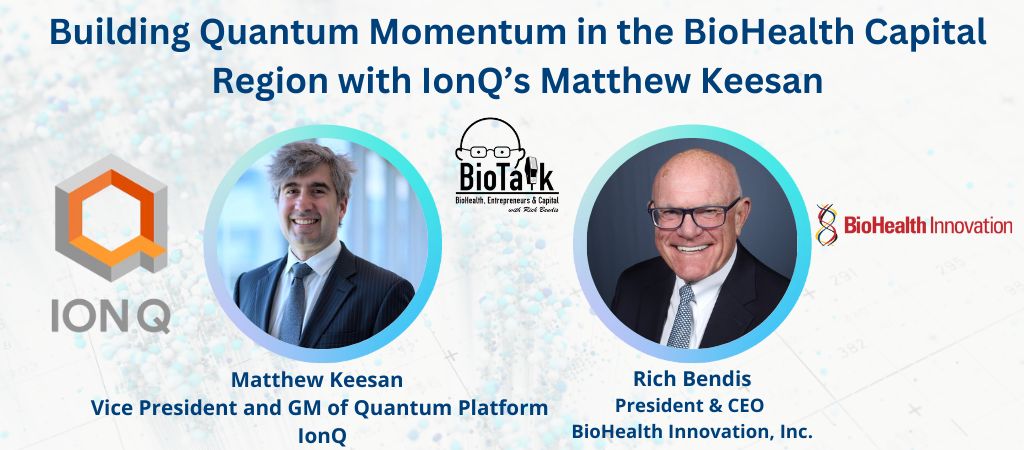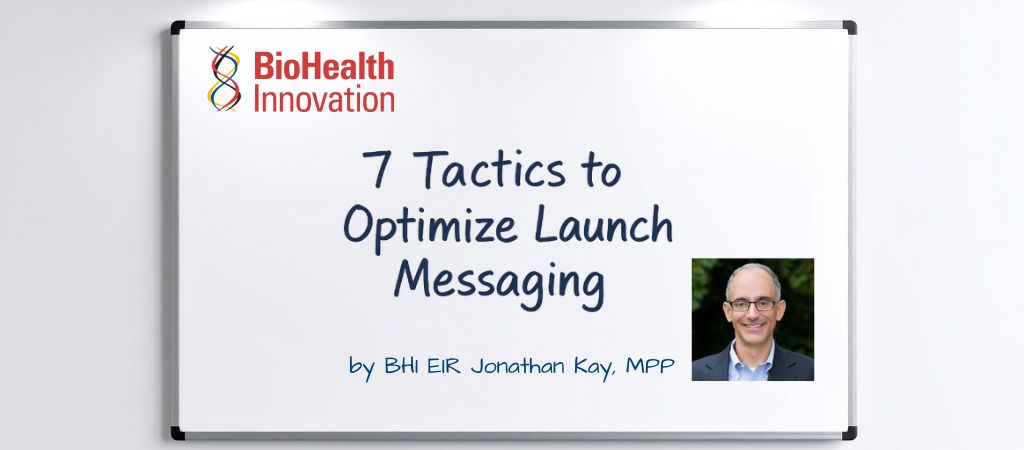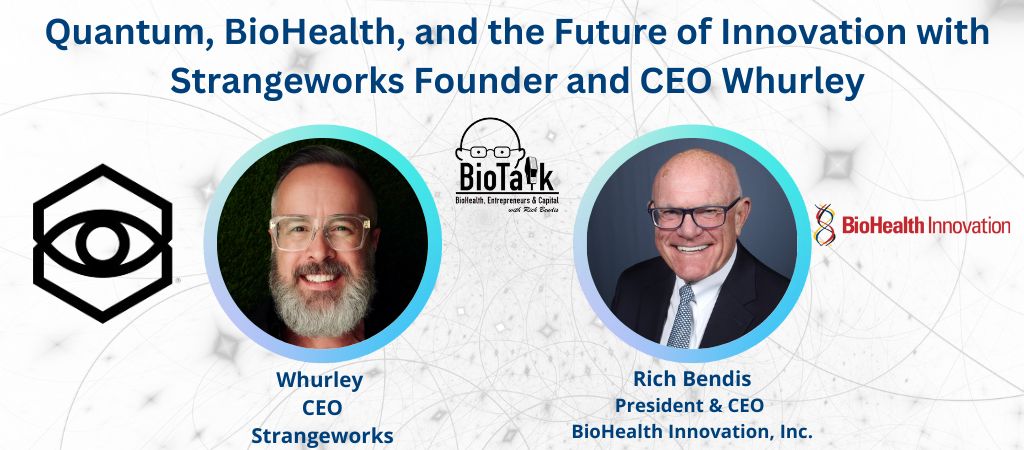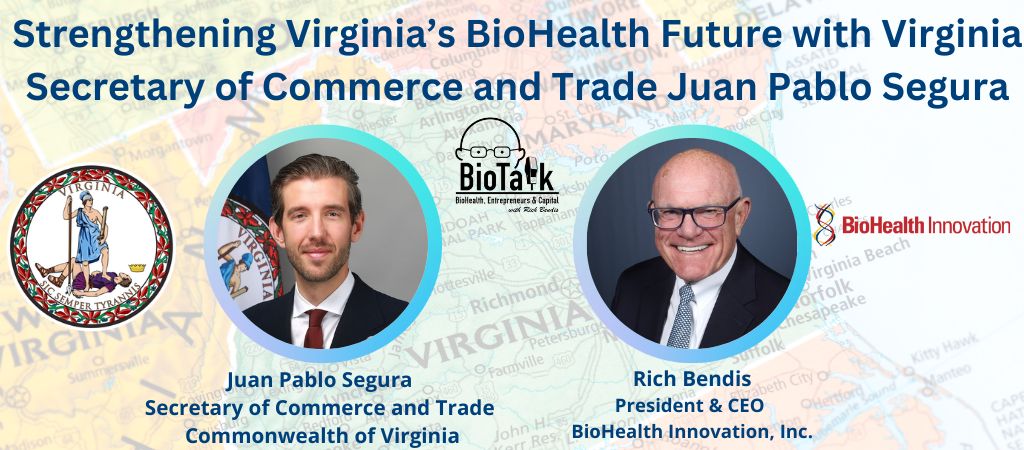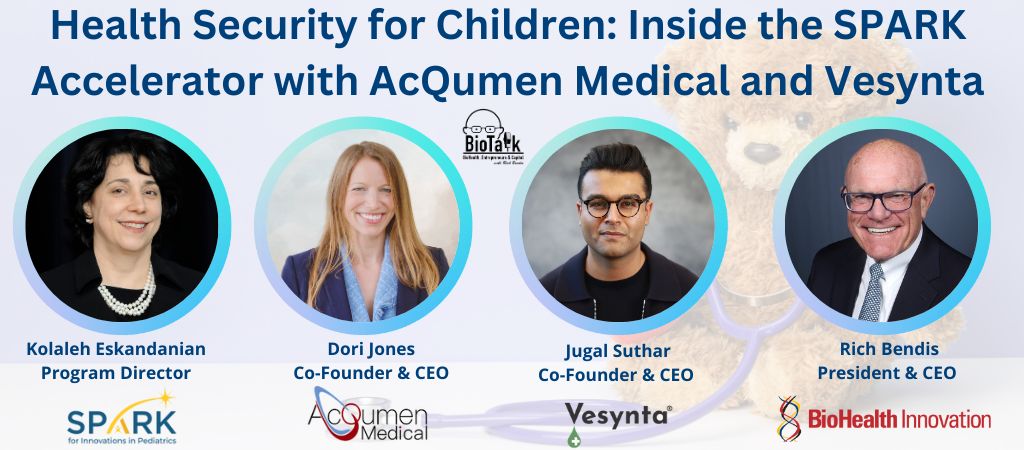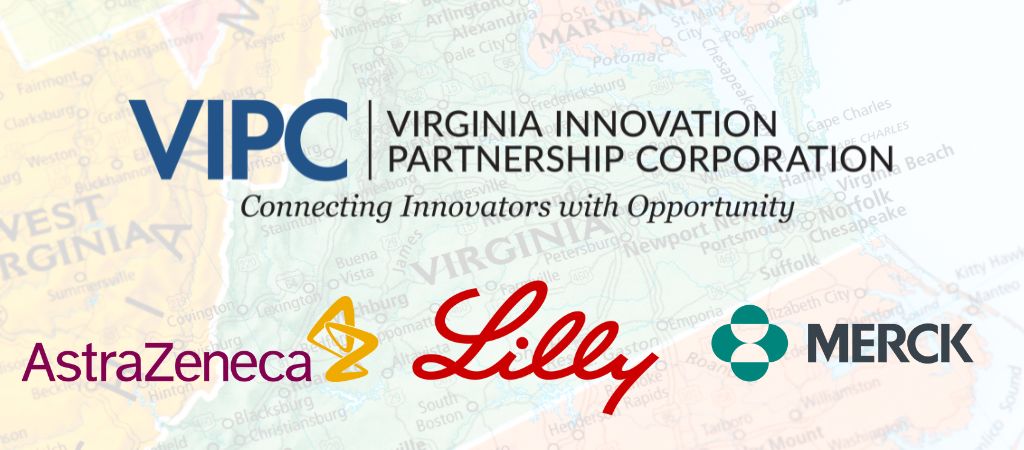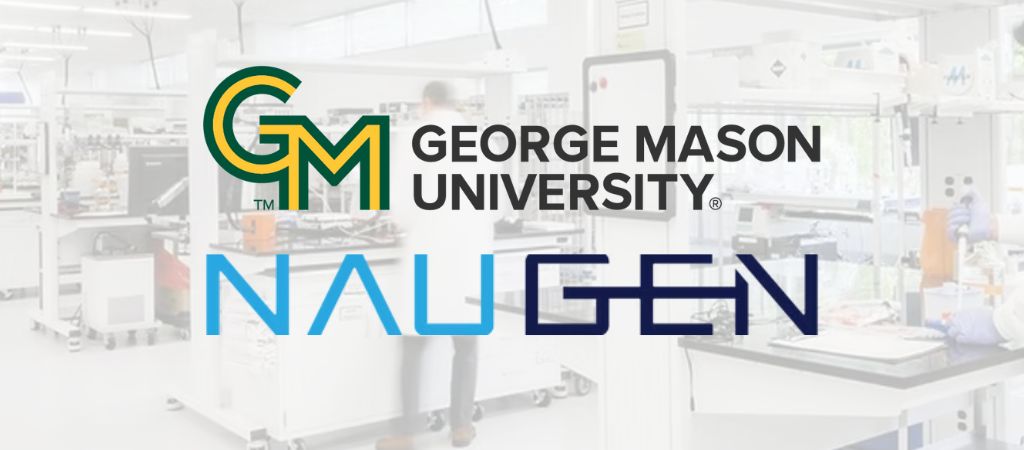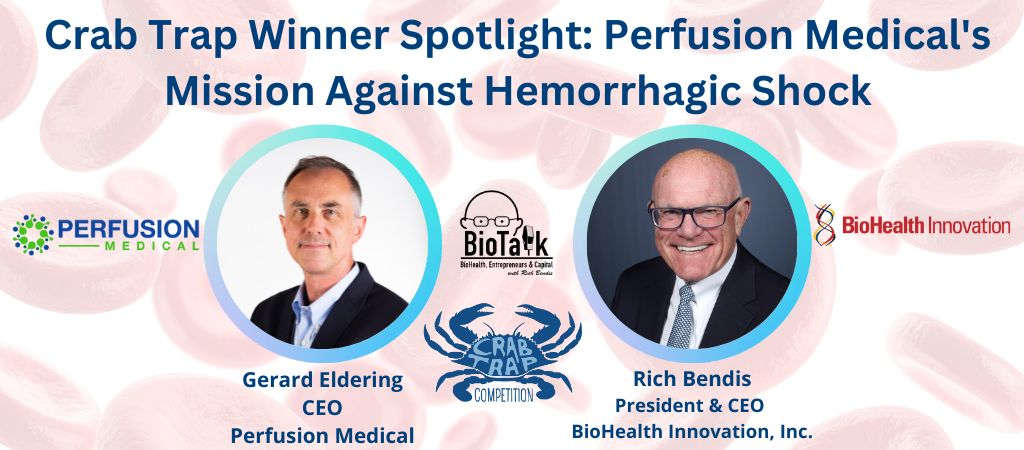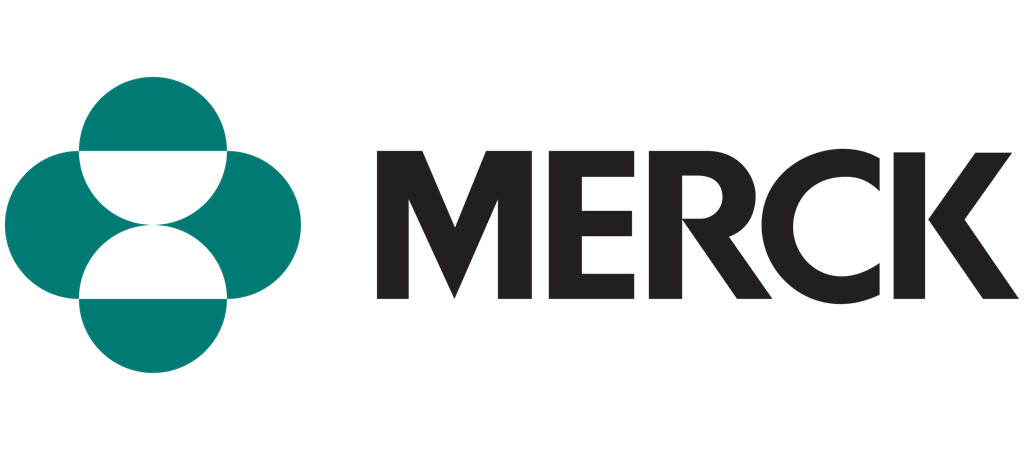BioHealth News
Entrepreneurs in Residence Call: Biohealth Commercialization Leaders with AI and Quantum Experience
BioHealth Innovation is expanding its Entrepreneurs in Residence (EIR) network and is seeking experienced leaders at the intersection of biohealth and advanced technologies, including…
Read MoreBuilding Quantum Momentum in the BioHealth Capital Region with IonQ’s Matthew Keesan on BioTalk
IonQ Vice President and GM of Quantum Platform Matthew Keesan joins BioTalk for a clear look at how they are advancing quantum computing from…
Read MoreBHI EIR Insights: 7 Tactics to Optimize Launch Messaging – Part I
by Jonathan Kay, MPP, Managing Partner, Health Market Experts & BioHealth Innovation, Inc. Entrepreneur-in-Residence Healthcare is complicated. Communicating effectively doesn’t need to be. For…
Read MoreQuantum, Biohealth, and the Future of Innovation with Strangeworks Founder and CEO Whurley on BioTalk
William Hurley, known widely as Whurley, joins BioTalk for a deep look at how quantum computing is moving from theory into practical use across…
Read MoreStrengthening Virginia’s BioHealth Future with Secretary of Commerce and Trade Juan Pablo Segura on BioTalk
Secretary Juan Pablo Segura joins BioTalk for a conversation about Virginia's growing position in the biohealth economy and the statewide strategy behind it. He…
Read MoreHealth Security for Children: Inside the SPARK Accelerator with AcQumen Medical and Vesynta
This episode brings together three leaders working at the intersection of pediatric innovation, health security, and early-stage commercialization. Kolaleh Eskandanian, Program Director of SPARK,…
Read MoreVIPC Signs MOU with AstraZeneca, Eli Lilly, Merck to Develop the Virginia Center for Advanced Pharmaceutical Manufacturing to Train Workforce of the Future
RICHMOND, Va., Nov. 20, 2025 /PRNewswire/ -- A Memorandum of Understanding (MOU) signed by the Virginia Innovation Partnership Corporation (VIPC) and AstraZeneca, Eli Lilly (Lilly), and Merck to develop the Virginia Center…
Read MoreA new era of global growth: George Mason and Naugen launch international innovation accelerator
This month, a new Northern Virginia International Soft-Landing Accelerator (NISA) program, designed to help start-ups from around the globe find guidance, connections, and lab…
Read MoreBioHealth Innovation, Inc. Welcomes Two New Members to Its Board of Directors, Matthew Keesan of IonQ and Prashant Panchal of AstraZeneca
BioHealth Innovation, Inc. (BHI), a leading public-private nonprofit organization supporting healthcare innovation in the BioHealth Capital Region, announces the appointment of two new members…
Read MoreCrab Trap Winner Spotlight: Perfusion Medical’s Mission Against Hemorrhagic Shock on BioTalk
In this episode of BioTalk, CEO Gerard Eldering explains how Perfusion Medical is addressing a problem that trauma physicians and military medics have been…
Read MoreBioTalk – Betting Big on Innovation in the Desert with BioHealth Las Vegas
In this episode of BioTalk, Rich Bendis sits down with Councilman Brian Knudsen, Jamie Schwartz of UNLV, and Vance Farrow from the Nevada Governor’s…
Read MoreTEDCO Unveils Second Round of Equitech Growth Fund Awardees
COLUMBIA, Md., (October 22, 2025) — TEDCO, Maryland’s economic engine for technology companies, announced the awardees for the second round of the Equitech Growth Fund. A total…
Read MoreMerck Breaks Ground on $3 Billion Center of Excellence for Pharmaceutical Manufacturing in Elkton, Virginia
The expansion underscores Merck’s commitment to invest more than $70 billion in U.S. research, development and capital projects RAHWAY, NJ, Oct. 20, 2025 –…
Read MoreBRAINBox Solutions Announces Publication in JAMA Network OPEN of Major Analysis of Initial HeadSmart II Trial Concussion Patients
Study identified baseline clinical characteristics and those subjects with subsequent persistent post-concussive symptoms Company also announces four new U.S. patents covering its concussion diagnostic/prognostic…
Read MorePhlow Corp. Selected by the U.S. Food and Drug Administration Commissioner’s First-Ever National Priority Voucher Pilot Program to Advance Manufacturing of a Critical Essential Medicine in America
RICHMOND, Va., October 16, 2025 – Phlow Corp., a leading American advanced pharmaceutical contract development and manufacturing organization (CDMO), today announced that the active pharmaceutical ingredient for…
Read More

